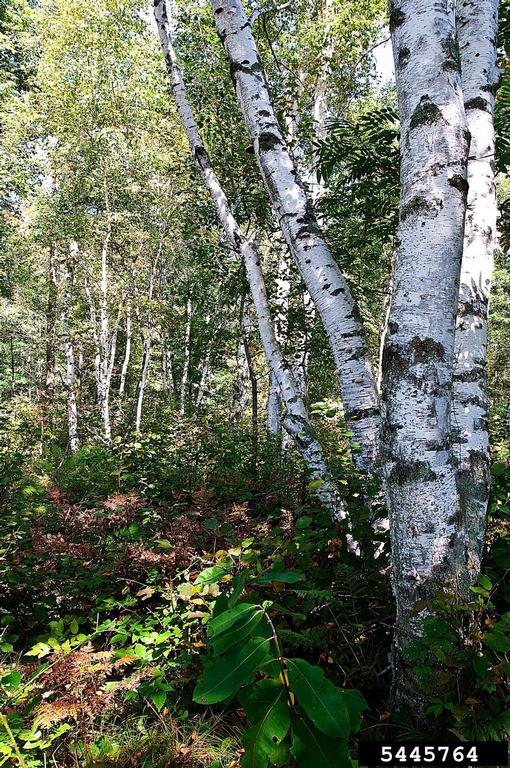By Kim Ballard, Project Canopy, kim.ballard@maine.gov

Photo credit: David Lee, bugwood.org
This article was first published on the website of the Maine Department of Agriculture, Conservation & Forestry. Reprinted with permission.
As urban foresters, we are often asked, “Why do you recommend planting a non-native tree in front of my house/on my sidewalk/in that parking lot?” The question is complex and has as many answers as there are environments in Maine. But it all boils down to “right tree, right place.”
Maine is the most forested state in the nation. Along with our beloved state tree, the eastern white pine, our forests are full of sugar maple, red oak, white birch and eastern hemlock. If you get a chance to wander through these native woods, you’ll notice that the shady air is cooler, moister and perhaps not as breezy as the air around your neighborhood sidewalks. Trees planted in our downtowns face a whole host of conditions – solar reflection, drought, soil compaction, road salt, tunneling winds that forest trees rarely encounter. Can you imagine a majestic white pine on Congress Street in Portland? Even if it could survive, it certainly wouldn’t be very happy. Our downtowns are NOT native spaces, and they cannot support our native species appropriately.
The asphalt, concrete, glass, and metal that make up our city centers and historic downtowns create what’s called “urban heat islands“. While the word “urban” seems an odd fit for many Maine towns, a street tree doesn’t know the population of its zip code it only knows that it lives in a 4-foot x 4-foot granite box, gets hit by car doors and sidewalk plows, and often only gets watered by the numerous dogs that visit it every morning. You can even feel how the temperature changes when you drive into Portland, Augusta or Bangor. The mercury can rise up to 7 degrees higher in a downtown area than in cooler, more rural areas. This temperature increase has a big effect on the vegetation within that locale. Again, a native yellow birch would struggle under these conditions.
As Maine’s city arborists, public works directors and parks supervisors juggle shrinking budgets, invasive bugs and cleaning up storm-damage, they must also see into the future when determining the tree species that will survive over the next 100 years. We know our climate is changing. Storms are becoming more intense, temperatures more extreme and sea levels are rising. While street trees can help lessen the effects of climate change, we need to ensure they will thrive. We must look to tree species that thrive in latitudes that are to our south but will also survive our cold winters. They need to be salt tolerant, drought and flood resistant, fast-growing – but also strong enough to withstand tough winds and snow loads, hold up to sun scorch, be pest and disease resistant…the list goes on. Species such as ginkgo, honeylocust, swamp oak, Kentucky coffeetree and black gum check many of those boxes and thus far don’t appear to become invasive like the Norway maple or Callery pear have become.
We ask a lot of our street trees. But the benefits they can provide when we do our research and plant the right tree in the right place – and maintain that tree – can be immeasurable.
For information on the effects of climate change and tree selection in Wisconsin, take a look at these resources:
- Planting for the Future: Selecting urban tree species in an age of climate change
- Recommended Large Street Trees
- Recommended Small Street Trees
- Recommended Large Park Trees
- Recommended Small Park Trees
